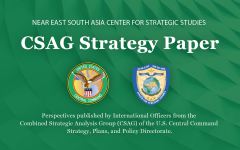UK Withdrawal in the 1970s and Reduction of US Military Footprint in 2021: A Comparison
June 27, 2022 2022-06-27 21:03UK Withdrawal in the 1970s and Reduction of US Military Footprint in 2021: A Comparison
UK Withdrawal in the 1970s and Reduction of US Military Footprint in 2021: A Comparison
By: LCDR Stipe Skelin, HRV Navy, CSAG CCJ5
22 June 2022
Overview:
This document proposes through the study of a historical case – the withdrawal of the United Kingdom from the Middle East (ME) in the 1970s – to establish a comparison with the continuous reduction of the US footprint. The political, financial, and military aspects will be highlighted. In particular, the redefinition of the American Hard Power Policy to the Soft Power, with a strengthening of the diplomatic approach as used in the 1970s, will be analyzed. In addition, a clarification of some of the identified challenges will be proposed. Finally, this document will propose answers to the following question: What opportunities should be explored by the United States with respect to the vacuum regional countries acknowledge is created by the US decisions?
Key Points:
- Switching from hard (military) power to soft (diplomatic) power is a new approach from the US to the region.
- The reactions in regard to the UK withdrawal in the 1970s from ME were:
- The attitudes of the Gulf states towards the British decision to withdraw varied.
- Secretary of State William Rogers reiterated in 1970 the United States’ desire for those British forces to remain in the Gulf because their withdrawal would constitute an open invitation for the Soviet Union to fill the resulting vacuum.
- The Soviet Union was in favor of Britain’s decision because it served the Soviets’ ambitions, and it also would lead to undermining the Western influence in the area.
- The current US reduction in military footprint and a decreasing influence is characterized by:
- Removal of its most advanced missile defense system and Patriot batteries from Saudi Arabia, even as the kingdom faced continued air attacks from Yemen’s Houthi rebels.
- Regional countries that seem to turn to another “partner of Choice”.
- In regard to Strategic Competitors in ME:
- Today, Russia plays an important role in the dynamics of the Middle East. A strong military presence in Syria provides them an opportunity to expand their influence in the region.
- China is present in the region with the Belt and Road Initiative. This option opens the possibility of military cooperation in the future with the countries of the region.
- As China was not identified in the 1970s as a likely competitor in the ME, it could be interesting to explore now which new competitor will emerge in the region in the medium and long-term.
View other USCENTCOM Combined Strategic Analysis Group (CSAG) papers here.
The opinions and conclusions expressed herein are those of a number of international officers within the Combined Strategic Analysis Group (CSAG) and do not necessarily reflect the views of United States Central Command, not of the nations represented within the CSAG or any other governmental agency.






